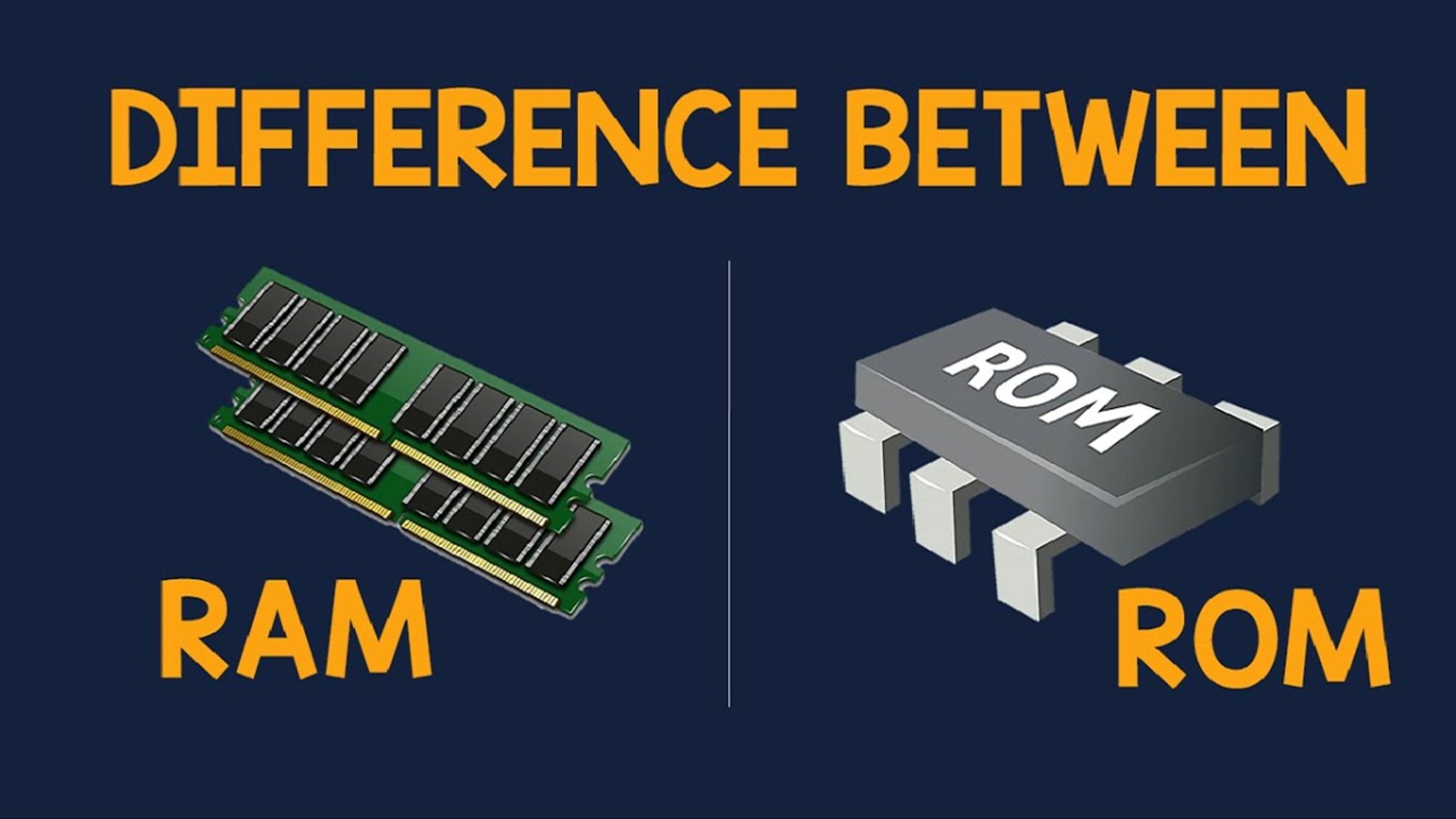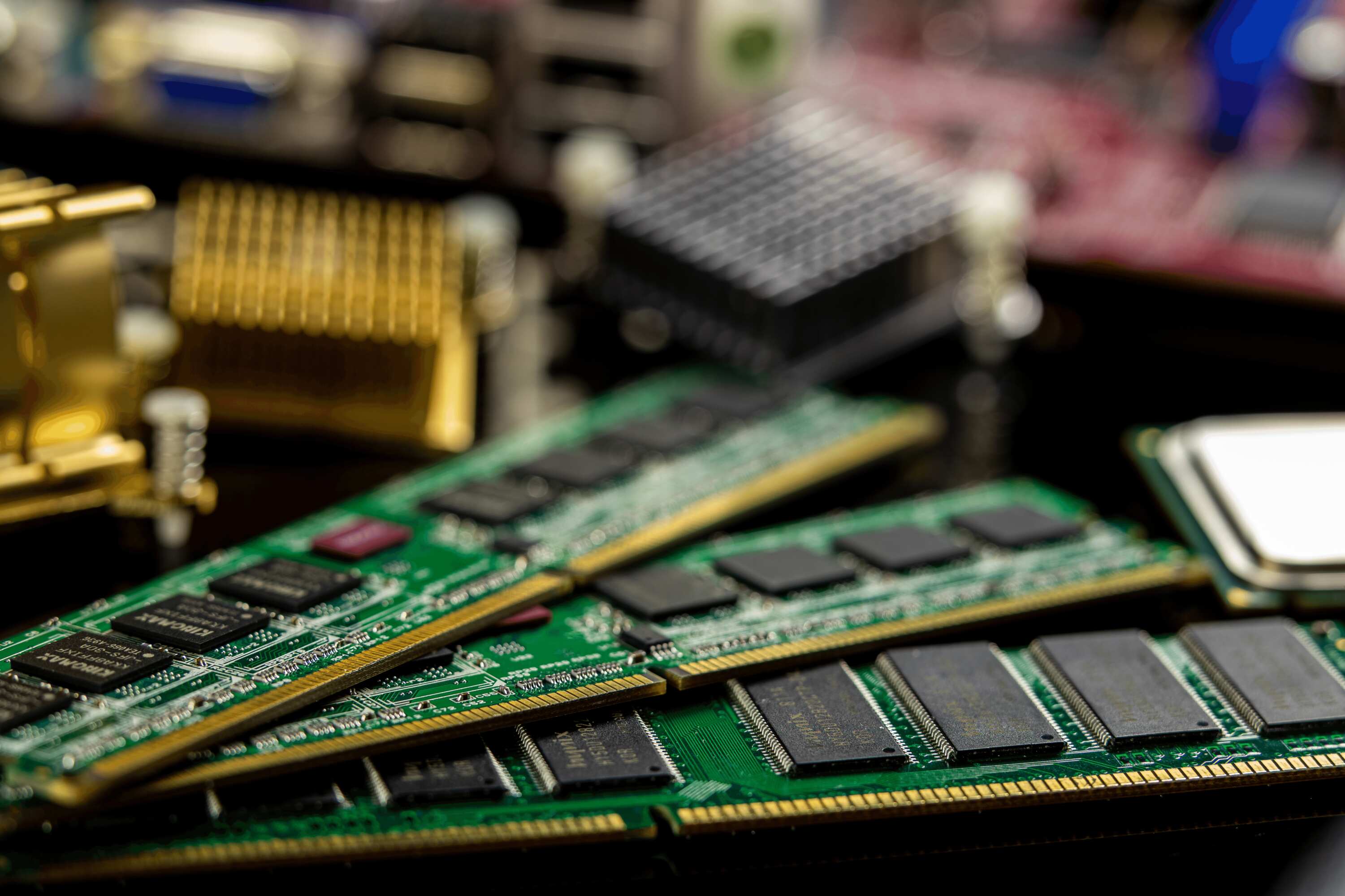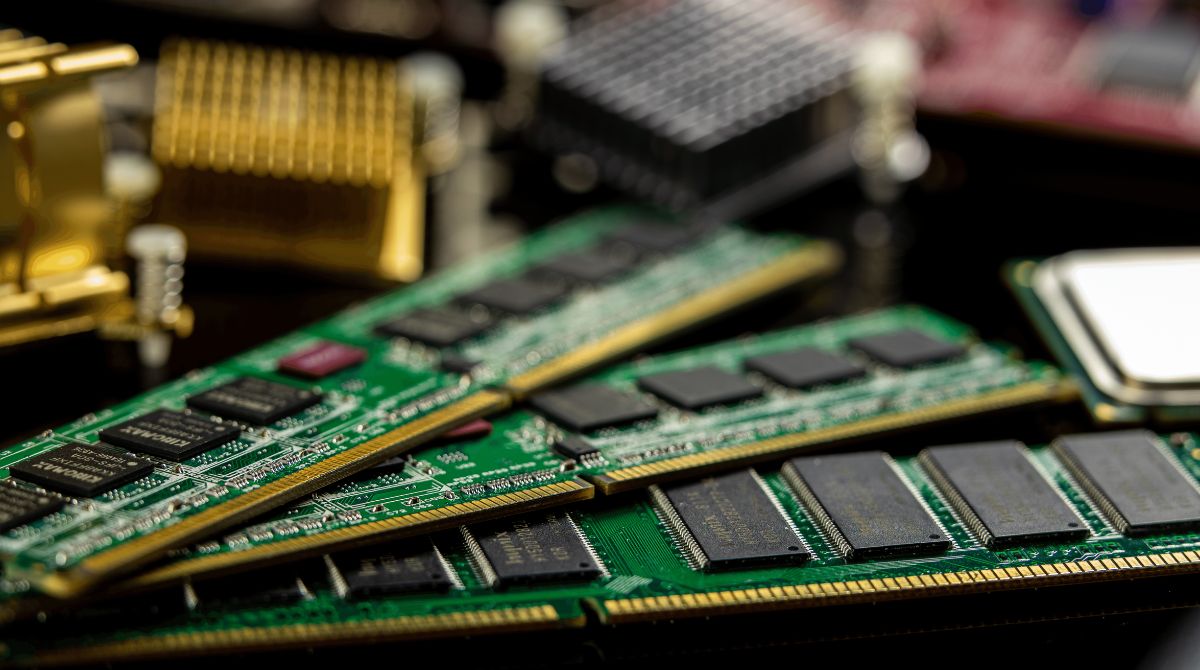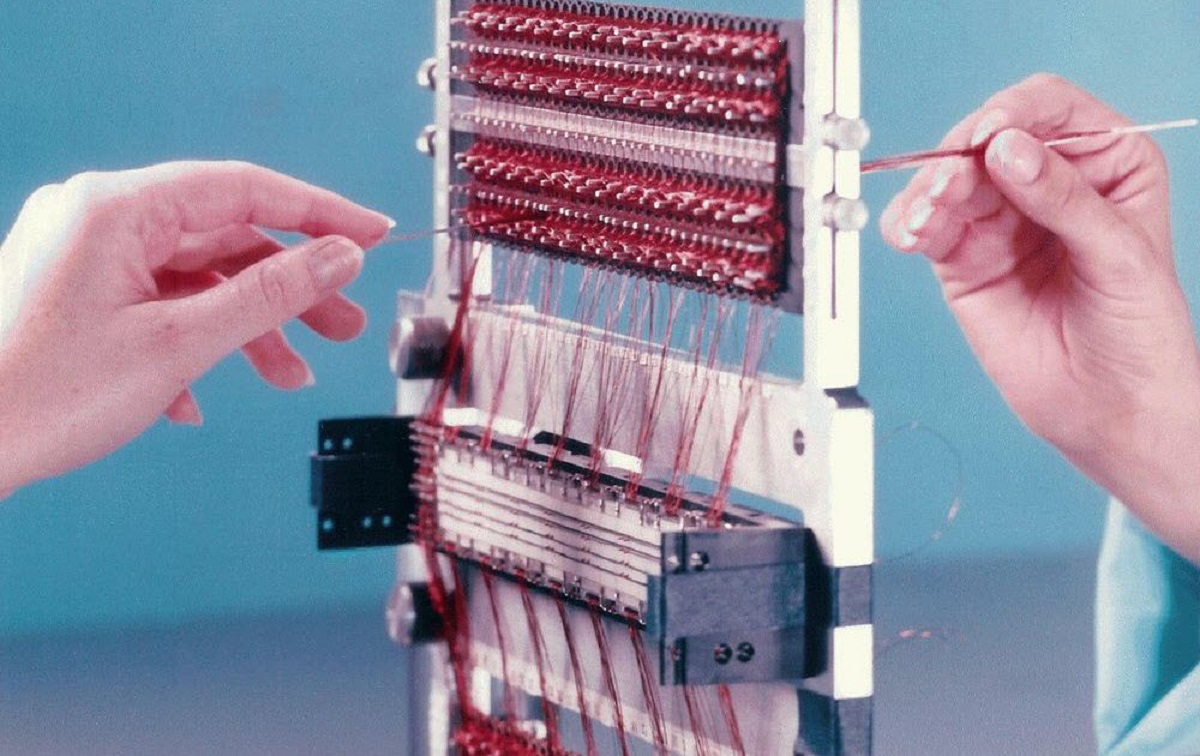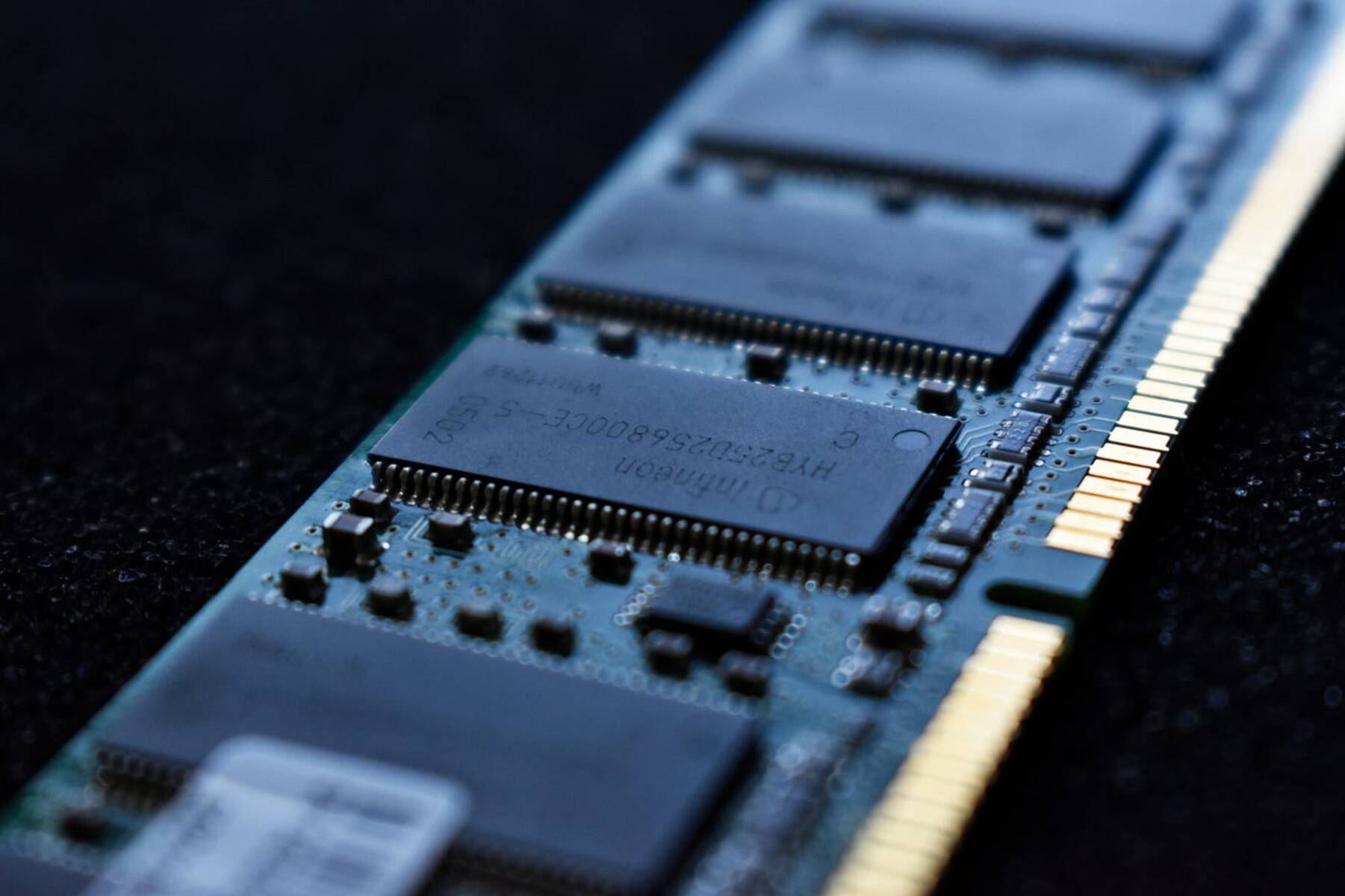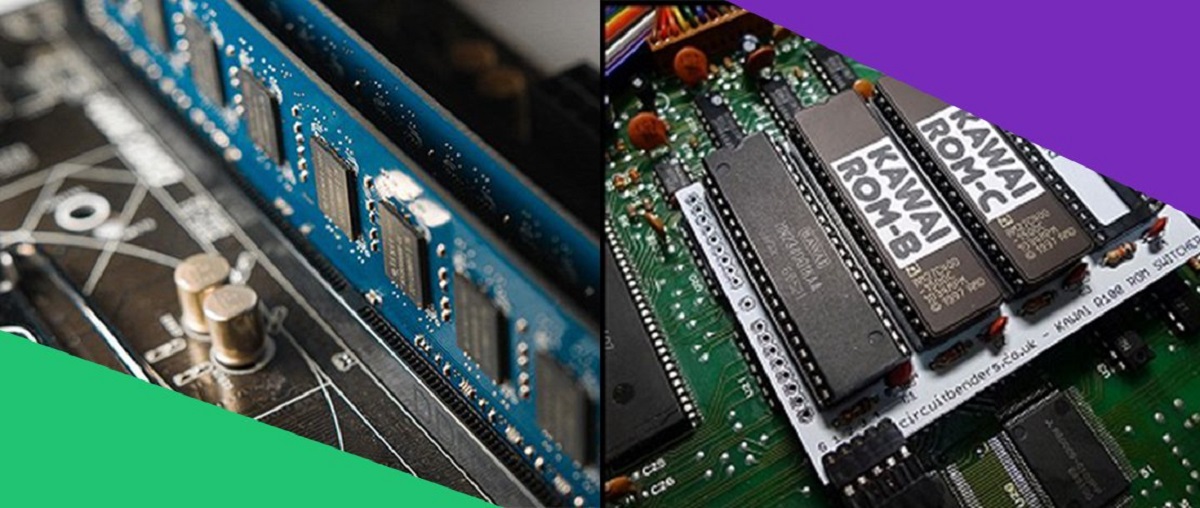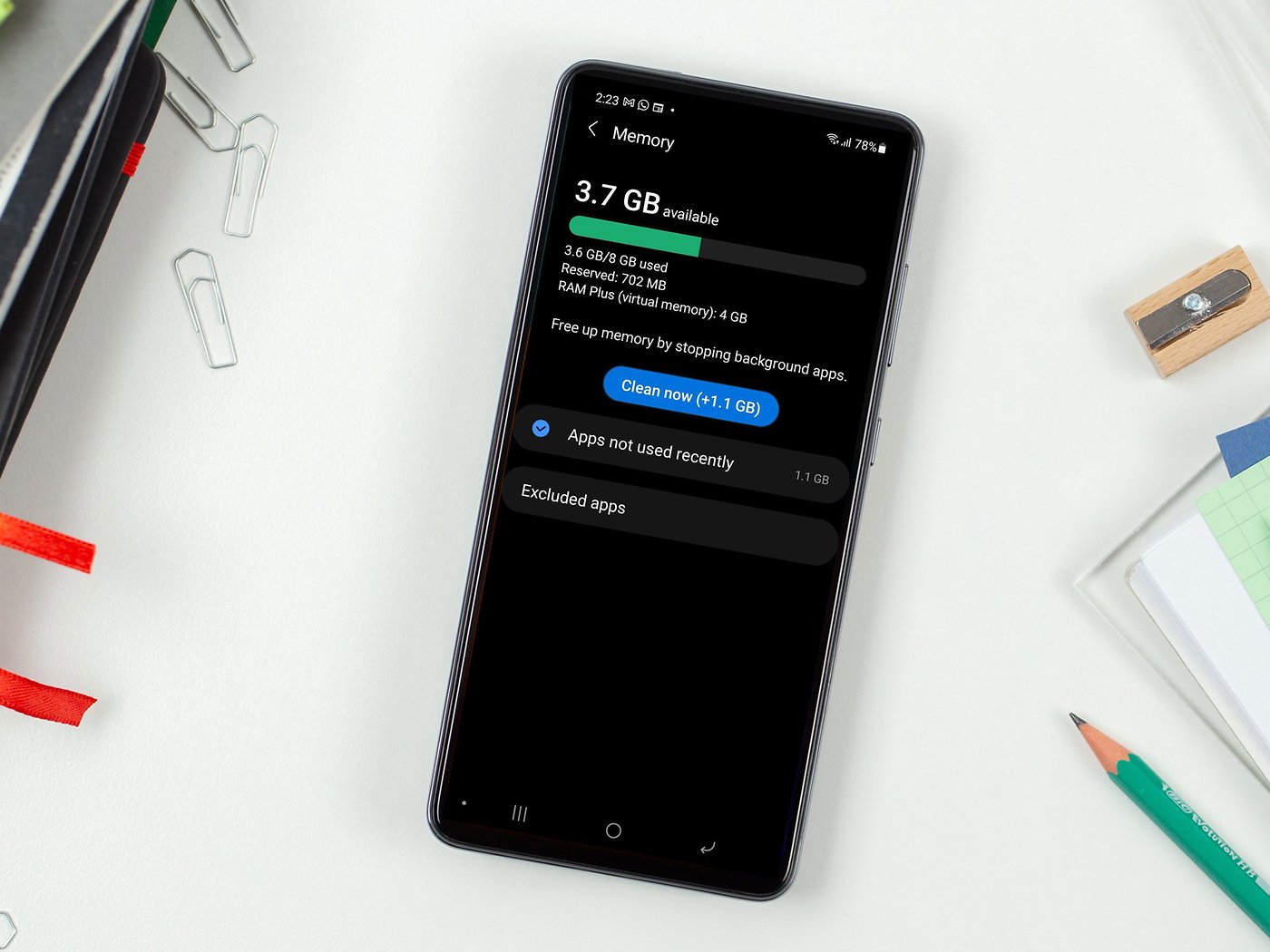Introduction
When it comes to computer memory, two terms often come up: RAM and ROM. While both play crucial roles in a computer system, they are fundamentally different in terms of purpose and functionality. Understanding the difference between RAM and ROM is essential for anyone looking to delve into the intricate world of computer hardware and system architecture.
RAM, which stands for Random Access Memory, and ROM, which stands for Read-Only Memory, are types of computer memory that serve distinct purposes in storing and accessing data. Despite their names, both RAM and ROM are essential components of a computer’s overall memory hierarchy.
In this article, we will explore the characteristics of both RAM and ROM, and highlight the key differences between the two. From volatility to access speed and storage capacity, each aspect sheds light on the unique features that set RAM and ROM apart. By understanding these differences, you will gain a deeper understanding of how computer memory works and how it affects the performance of your system.
So, let’s dive in and discover what sets RAM and ROM apart in terms of functionality, purpose, and accessibility. Understanding the distinctions between the two will not only enhance your knowledge of computer hardware but also enable you to make informed choices when it comes to expanding or upgrading your computer’s memory.
What is RAM?
RAM, also known as Random Access Memory, is a type of volatile computer memory that is used to store and access data that is actively being processed by the computer’s CPU (Central Processing Unit). Unlike ROM, RAM allows for both reading and writing of data, leading to its dynamic nature.
RAM operates in real-time, providing temporary storage for data that the CPU needs to access quickly. It acts as a workspace for executing programs, running applications, and storing data that is actively being used by the computer. The data stored in RAM can be quickly accessed and modified, allowing for faster processing and multitasking.
The main characteristic of RAM is its volatility. This means that the data stored in RAM is temporary and is lost when the computer is powered off or restarted. This is why it is often referred to as “volatile memory.” To retain data permanently, it needs to be stored in other types of memory, such as ROM or secondary storage devices like hard drives or SSDs (Solid State Drives).
RAM is designed to provide fast read and write access to data, enabling the CPU to fetch and store information quickly. It is based on semiconductor technology, which allows for high-speed data transfer.
The capacity of RAM is measured in gigabytes (GB) or terabytes (TB), with higher capacity RAM modules offering more storage space for data. Over the years, the capacity of RAM has significantly increased, allowing computers to handle larger and more complex tasks.
Overall, RAM plays a critical role in determining the performance of a computer. The more RAM a computer has, the more data it can store and access quickly, resulting in faster processing speeds and improved multitasking capabilities. Upgrading your computer’s RAM can provide a noticeable boost in performance, especially when running memory-intensive applications or working with large files.
What is ROM?
ROM, or Read-Only Memory, is a type of non-volatile computer memory that is used to store permanent or semi-permanent data. As the name suggests, data stored in ROM is read-only, meaning it cannot be modified or overwritten. ROM contains essential instructions and data that are required for the computer to boot up and perform basic operations.
Unlike RAM, ROM retains its data even when the computer is powered off or restarted. This characteristic of non-volatility makes ROM ideal for storing crucial system instructions and firmware that are needed every time the computer is turned on.
ROM is typically used to store firmware, which is a type of software that is permanently programmed onto a hardware device. Firmware provides the necessary instructions for the device to function properly. Examples of firmware stored in ROM include the BIOS (Basic Input/Output System) of a computer and the firmware on a game console.
There are different types of ROM, each with its own properties and uses. One common type is Mask ROM (MROM), which is manufactured with the data already programmed onto the chip during production. This data cannot be changed or modified later.
Another type of ROM is Programmable ROM (PROM), which can be programmed by the user or manufacturer after production. PROM allows for the permanent storage of data or instructions specific to a particular application or system.
Erasable Programmable ROM (EPROM) and Electrically Erasable Programmable ROM (EEPROM) are types of ROM that can be erased and reprogrammed, although the process requires special equipment or techniques.
Because of its non-volatile nature, ROM provides the computer with essential initial instructions, such as the booting process. It also stores data that must remain intact, even when the power is off. Thus, ROM ensures that the computer can start up and operate reliably each time it is turned on.
In summary, ROM is a non-volatile memory type that stores permanent or semi-permanent data. It is used to store essential instructions and data that are required for a computer or device to boot up and perform basic operations. Unlike RAM, ROM cannot be modified or overwritten and retains its data even when the power is off.
The Difference Between RAM and ROM
While both RAM and ROM are types of computer memory, they differ significantly in terms of purpose, volatility, and accessibility. Here are the key differences between RAM and ROM:
- Volatility: RAM is volatile memory, meaning the data stored in it is temporary and is lost when the computer is powered off or restarted. On the other hand, ROM is non-volatile memory, meaning it retains its data even when the power is off.
- Purpose: RAM is used for dynamic and temporary storage of data that is actively being processed by the CPU. It acts as a workspace for executing programs and running applications. ROM, on the other hand, stores permanent or semi-permanent data, such as firmware and system instructions, which are essential for the computer to boot up and perform basic operations.
- Read and Write Access: RAM allows for both reading and writing of data, enabling the CPU to quickly access and modify information. In contrast, ROM is read-only memory, meaning the data stored in it cannot be modified or overwritten. This read-only characteristic ensures the integrity and stability of essential system instructions and firmware.
- Speed: RAM is designed to provide fast read and write access, allowing the CPU to fetch and store data quickly. ROM, however, tends to have slower access speeds compared to RAM, although this speed difference is not typically noticeable in everyday computer usage.
- Capacity: RAM capacity is measured in gigabytes (GB) or terabytes (TB), and it can vary depending on the computer system. With advancements in technology, the capacity of RAM has significantly increased over the years, allowing for larger and more memory-intensive tasks. ROM, on the other hand, typically has a fixed capacity based on the specific device or chip it is installed on.
These differences between RAM and ROM highlight the distinct roles they play in a computer system. RAM provides temporary storage and quick read/write access to actively used data, enabling efficient processing and multitasking. ROM, on the other hand, stores permanent or semi-permanent data that is essential for system operation and cannot be modified.
Understanding the differences between RAM and ROM allows for better insights into how computer memory works and how it affects the overall performance and functionality of a computer system.
Volatility
One of the key differences between RAM and ROM is their volatility.
RAM, or Random Access Memory, is a volatile memory type. This means that the data stored in RAM is temporary and is lost when the computer is powered off or restarted. When the computer is turned on again, RAM is cleared, and it starts fresh with new data.
This volatile nature of RAM allows for dynamic and temporary storage of data that is actively being processed by the computer’s CPU. It acts as a workspace where programs and applications can store and access data quickly, enabling faster processing and multitasking.
On the other hand, ROM, or Read-Only Memory, is a non-volatile memory type. This means that the data stored in ROM is retained even when the power is off. The information stored in ROM is permanent or semi-permanent and cannot be easily modified or overwritten.
ROM retains its data integrity over time, making it suitable for storing crucial system instructions and firmware that are required for the computer to boot up and perform basic operations. Examples of data stored in ROM include the computer’s BIOS (Basic Input/Output System) and firmware on devices such as game consoles.
The volatile nature of RAM and the non-volatile nature of ROM highlight their different purposes and functionalities. RAM provides temporary storage for data that requires quick access and modification, while ROM stores permanent or semi-permanent data that needs to remain intact, even when the power is off.
It is worth noting that the volatility of RAM leads to the need for efficient data management. When working on important documents or projects, it’s essential to save the data to a non-volatile storage medium, such as a hard drive or SSD, to prevent data loss in case of a power outage or system restart.
In summary, RAM is volatile memory, allowing for temporary storage and fast access to actively-used data. On the other hand, ROM is non-volatile memory, retaining its data even when the power is off, making it suitable for storing permanent or semi-permanent instructions and data.
Purpose
RAM and ROM serve distinct purposes in a computer system, catering to different needs and functionalities.
RAM, or Random Access Memory, is primarily used as a temporary storage medium for data that is actively being processed by the computer’s CPU. It acts as a working area where the CPU can quickly read and write data, enabling efficient program execution and multitasking capabilities.
One of the main purposes of RAM is to provide the computer with a fast and reliable memory space to store and access data in real-time. As programs and applications are opened and run on a computer, the related data is loaded into RAM, allowing for quick access by the CPU. This results in smoother and more responsive system performance.
RAM also plays a crucial role in enabling multitasking. With a sufficient amount of RAM, the computer can run multiple programs simultaneously, smoothly switching between them without excessive slowdowns. Each program gets its own dedicated space in RAM to store and access data, ensuring efficient data retrieval and processing.
In contrast, ROM, or Read-Only Memory, serves a different purpose in a computer system. ROM stores permanent or semi-permanent data that is essential for the computer’s basic operations, such as system instructions and firmware.
The main purpose of ROM is to hold critical system information that is needed every time the computer is turned on or restarted. This includes the computer’s BIOS (Basic Input/Output System), which initializes the hardware components and facilitates the boot-up process. Other firmware stored in ROM includes specific device instructions required for proper functioning, such as the firmware on game consoles or the firmware on embedded systems.
Because ROM is non-volatile, the data stored in it remains intact even when the power is off. This ensures that the essential instructions and firmware are readily available whenever the computer is powered on, making ROM an invaluable part of the computer’s core functionality.
In summary, RAM serves the purpose of providing temporary and fast storage for actively used data, facilitating efficient program execution and multitasking. ROM, on the other hand, holds permanent or semi-permanent data, such as system instructions and firmware, essential for the computer’s basic operations and boot-up process.
Read and Write Access
RAM and ROM differ in terms of their read and write access capabilities, which play a crucial role in how data is handled within a computer system.
RAM, or Random Access Memory, allows for both reading and writing of data. This means that the CPU can quickly retrieve existing data from RAM and write new data to it. This read and write access is essential for the dynamic nature of RAM, as it enables the computer to store and modify data in real-time.
With read and write access, RAM acts as a temporary workspace where the CPU can load and manipulate data as needed. It provides a fast and efficient way for programs and applications to store and access data that is actively being processed, resulting in faster program execution and improved system performance.
On the other hand, ROM, or Read-Only Memory, is primarily designed for read-only access. The data stored in ROM cannot be modified or overwritten. This read-only characteristic ensures the integrity and stability of important system instructions and firmware that are stored in ROM.
The read-only access of ROM ensures that the essential data remains unchanged and secure, preventing accidental modifications or data corruption. It is specifically designed to store permanent or semi-permanent instructions and data that are critical for the computer’s operation.
While it is not possible to directly write or modify data in ROM, there are certain types of ROM, such as Erasable Programmable ROM (EPROM) and Electrically Erasable Programmable ROM (EEPROM), that can be erased and reprogrammed. However, reprogramming these types of ROM requires special equipment or techniques and is not as straightforward as writing to RAM.
It’s important to note that because of the read-only nature of ROM, any updates or changes to the data stored in ROM usually require physical modification of the ROM chip itself. This makes ROM suitable for storing permanent system instructions and firmware that are highly reliable and stable.
In summary, RAM allows for both read and write access, making it a versatile and dynamic memory medium for storing and modifying data. ROM, on the other hand, is primarily designed for read-only access, ensuring the integrity of critical system instructions and firmware that cannot be easily modified or overwritten.
Speed
The speed at which data can be accessed and transferred is an important factor in computer memory. RAM and ROM differ in their access speeds, which can impact overall system performance.
RAM, or Random Access Memory, is designed to provide fast read and write access to data. The data stored in RAM can be quickly fetched by the CPU for processing or modification. RAM operates at high speeds, allowing for efficient data transfer between the memory and the CPU.
The fast access speed of RAM enables the computer to retrieve and store data in real-time, facilitating smooth program execution and multitasking capabilities. With faster RAM, the CPU can access data more quickly, resulting in improved system responsiveness and reduced processing times.
In contrast, ROM, or Read-Only Memory, generally has slower access speeds compared to RAM. The speed of ROM is typically sufficient for its intended purpose, which is to provide permanent or semi-permanent storage of instructions and data.
While the access speed of ROM may not be as critical as that of RAM for general computing tasks, it is still important for certain operations. For example, when the computer is booting up, the firmware stored in ROM needs to be accessed and executed, and having a reasonably fast ROM ensures a smooth and timely boot-up process.
It’s important to note that the speed difference between RAM and ROM may not be noticeable in everyday computer usage, as ROM is primarily used for system-level operations rather than dynamic data manipulation. Nonetheless, advancements in technology have led to improvements in both RAM and ROM, resulting in faster access speeds for both types of memory.
Overall, while RAM offers the advantage of faster access speeds, ROM’s slightly slower speed is still sufficient for its intended purpose. Both RAM and ROM contribute to the overall efficiency and functionality of a computer system, albeit in different ways.
Capacity
The capacity of computer memory plays a significant role in determining the amount of data that can be stored and accessed by a computer system. RAM and ROM differ in their storage capacities, allowing for different levels of data storage and retrieval.
RAM, or Random Access Memory, is available in various capacities, typically measured in gigabytes (GB) or terabytes (TB). The capacity of RAM determines the amount of data that can be stored in it at any given time. More RAM translates to a larger space for storing and accessing data, which can result in improved system performance and multitasking capabilities.
Over the years, advancements in technology have led to an increase in RAM capacities, allowing computers to handle larger and more memory-intensive tasks. Modern computers can have RAM capacities ranging from a few gigabytes to multiple terabytes, depending on the system’s requirements and the user’s needs.
ROM, or Read-Only Memory, typically has a fixed capacity based on the specific device or chip it is installed on. The capacity of ROM is determined during the manufacturing process and cannot be easily changed or expanded by the end-user. The size of ROM is mainly dependent on the needs of the device or system it is designed for.
The capacity of ROM is often lower compared to RAM, as it is primarily used for storing permanent or semi-permanent data such as system instructions and firmware. The capacity of ROM is rarely a limiting factor for most computer systems, as the data stored in ROM is typically small in size compared to the data stored in RAM.
It’s important to note that while the capacity of RAM can have a direct impact on the system’s performance, the capacity of ROM is more focused on storing essential system-level data rather than large data sets used in everyday computing tasks.
Overall, RAM and ROM offer different storage capacities, with RAM providing the flexibility of expandable and larger data storage for dynamic data processing, while ROM offers a fixed capacity optimized for permanent or semi-permanent system-level data storage.
Conclusion
In conclusion, RAM and ROM are two distinct types of computer memory that play crucial roles in storing and accessing data in a computer system. While they share similarities in name, they differ significantly in terms of purpose, volatility, read and write access, speed, and capacity.
RAM, or Random Access Memory, is volatile memory that provides temporary storage for data actively being processed by the CPU. It allows for fast read and write access, enabling efficient program execution and multitasking. RAM’s volatile nature means that the data stored in it is temporary and is lost when the computer is powered off or restarted.
ROM, or Read-Only Memory, is non-volatile memory that stores permanent or semi-permanent data, such as system instructions and firmware. It is primarily used for read-only access, ensuring the integrity and stability of critical system data. The data stored in ROM remains intact even when the power is off.
The difference between RAM and ROM can be summarized by understanding their purposes. RAM serves as a temporary workspace for actively used data, allowing for quick read and write access. On the other hand, ROM stores permanent or semi-permanent data that is essential for the computer’s operation and cannot be easily modified.
These differences, along with the contrasting speed and capacity characteristics, make RAM and ROM suitable for different aspects of computer memory. RAM provides fast, dynamic storage for efficient data processing, whereas ROM ensures the availability of critical system-level data.
Having a clear understanding of the differences between RAM and ROM is essential for anyone seeking to delve into the realm of computer hardware and system architecture. It assists in making informed decisions on memory upgrades and optimizing system performance.
In summary, RAM and ROM are fundamental components of computer memory, each with its specific purpose and functionality. They work in harmony to ensure efficient data storage, accessibility, and processing, ultimately contributing to the overall performance of a computer system.







